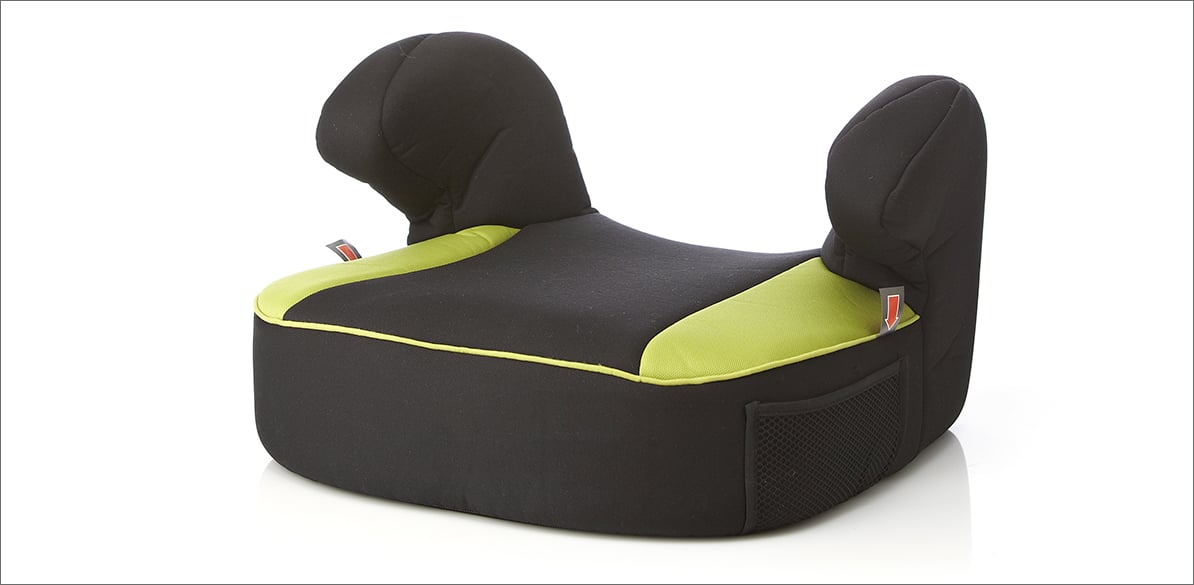Height-adjustable boosters
Why have these evolved?

Road Safety
In the early 2000s, it was a common rumor among child seat manufacturers that backless boosters were banned. These child restraint systems were considered precarious and, even today, many so-called “experts” continue to consider them simply something to use “to avoid being fined”, a substitute for a seat with a backrest that is not comparable in terms of safety.
But let’s go to the studies, to the source. And as on many occasions when we talk about child safety, the source is in Sweden.
In 2012, VOLVO presented a study that changed the life of the booster seat. In that study VOLVO showed that once a child reaches a certain height, 125 cm, a booster seat is better able to protect them than a chair with a backrest, and for this to be true just a couple of conditions must be met. The conditions the company established are a certain height for the booster seat, and that the vehicle has window airbags.
And why was VOLVO, the paradigm of safety, able to make such a strong statement?
It was based on 2 principles, on the one hand, the increased survival space, which we have discussed in other articles, and on the other hand, the protection conferred by the car itself.
With respect to the first, a booster has no backrest, so the head is supported by the backrest of the car seat, increasing the survival space by about 80 mm, and reducing the risk of the head coming into contact with the front seat.
The second principle concerns side collisions. If the child’s head is at a certain height, the car window airbag protects their head from colliding with the window and the structure of the car.
And how does it protect them? According to the VOLVO study, the protection provided by the window airbag is better than that provided by the side of a child seat with a backrest.
This minimum height that the booster must have was defined during the last revision of Regulation 129, resulting in a minimum of around 135 mm for a child who is 125 cm tall. And I want to emphasize this fact because if the booster is higher than 135 mm, the contact with the window airbag will be even better and the level of protection will be greater.
But of course, we are faced with the typical problem that children grow, and if the booster is more than 135 mm high, then we will end up cutting a hole in the roof of the vehicle. This is why it makes sense for booster seats to be height adjustable, to adapt the child’s growth to the height of an adult and ensure good protection in the event of a side collision.
Therefore, as a general recommendation, if we make short trips, where our child does not fall asleep, and we have a car with a window airbag, which has been true in practically all vehicles for over 10 years, the Regulation 129 booster seat is a very good child restraint system. If, on the other hand, we make long trips, during which the child goes to sleep, we recommend using child seats with a backrest for comfort and safety while sleeping.
If we decide to use a booster, it is important to choose one that is approved according to Regulation 129, with the greatest possible height and, if possible, a height which is adjustable.
